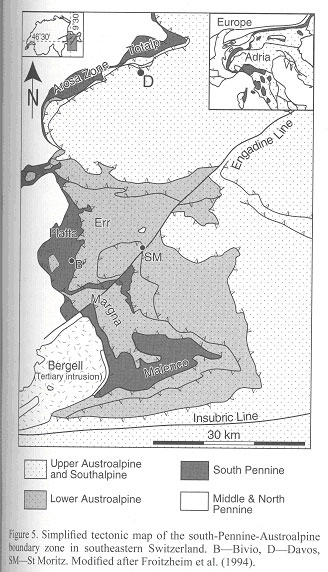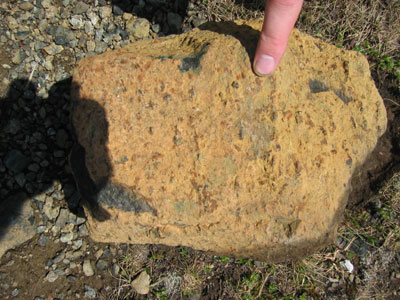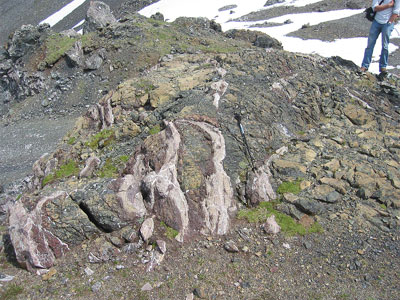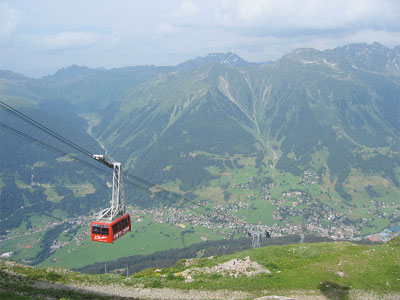




 |
 |
 |
 |
 |
 |
We took the Gotschnabahn cable car to the top of the mountain to the south of Klosters. Our objective was to take a detailed look at peridotites and ophicalcites of the seafloor exposed in the Totalp nappe. The Totalp nappe is a tectonic sliver sandwiched between Austroalpine continental basement above and a tectonically-overturned slab of detached Austroalpine sediments (upper Triassic dolomite) below. To the left is a tectonic map overview of the nappe units exposed in this part of Graubunden. We made a traverse from the top of the cable car station (Parsenhutte) to a ski lift station (Parsenfurgga). The outcrops along the traverse were examined in order to evaluate the following questions:
|

Peridotite mylonite, Parsenhutte to Parsenfurgga traverse, Totalp nappe, near
Klosters, Switzerland.

View looking east along the Parsenhutte-Parsenfurgga traverse. Mantle rocks
of the Totalp nappe are black/dark grey—they dominate the right side of
the photo; light grey sediments (dolomites and shales) are shown on the left.

Ophicalcites in outcrop, Parsenhutte-Parsenfurgga traverse, near Klosters

The view (looking northwest) from the Gotschnabahn on the way down to Klosters